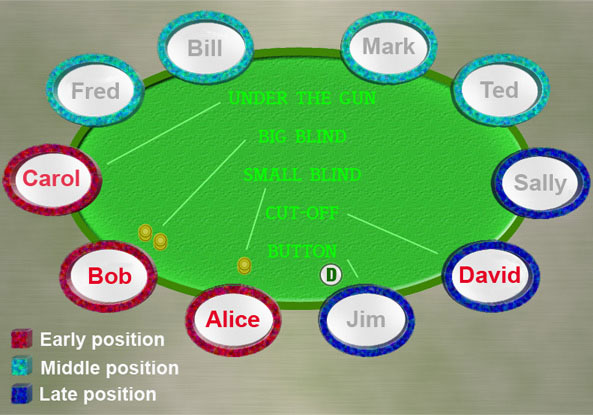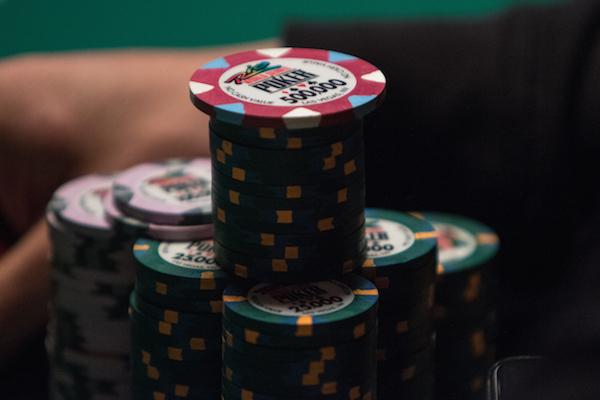Poker Split Pot Odd Chip
How to Split Pots
On the surface, splitting pots is easy enough: simply take the pot, split it evenly, and each player takes their winnings.

Pot odds, which is the ratio of making or calling a bet compared to the size of the pot, is one of the most essential concepts you need to know to play winning poker. In this reference article, I’d like to explain the concept of pot odds including what it is, how to calculate it, and why it’s important to you as a smart poker player. If one player has a-2 and another has a-3 they will chop the pot a certain percentage of the time. Like a flop like k-k-7-5-8 it would be a split pot because they have the same hand. Whats a quick way to work out pot odds in a game of Texas Holdem Poker? Texas Holdem Pot Odds – What They are and How to Use Them to Win Big Money. Inevitably, there will be a pot that can't be split evenly: a 5-cent chip that can't be broken down, or an even number of players will try to split a pot with an odd number of chips in it. Pot odds represent the ratio between the size of the total pot and the size of the bet facing you. Keep in mind that the size of the total pot includes the bet(s) made in the current round. For example, if there is $2 in the pot and your opponent bets $1, your pot odds are 3 to 1. Example of Split Pot used in a sentence - In the split pot Stud game Chicago, a high spade in the hole wins half the pot. How to Use Split Pot as Part of Your Poker Strategy. Novice split pot players generally try and compete for one half of the pot. They will either try to make the best low hand or the best high hand. However, the real.

This is especially easy when two players have the same five-card hand: each takes half. If it's three or four or more players all with the same hand, divide the pot by the number of players, and each player collects their winnings.
But things can get tricky fast.
High-Low
In high-low games, the easiest split pot is when one player wins the high and the other wins the low. Here, you simply divide by two and each player collects their winnings. A player with the best high and the best low hand 'scoops' the whole thing.
But, especially in games like Omaha High-Low, when lots of players might all have the same low or the same high, the pot needs to be split along more complicated lines.
For instance, more than one player might all have the same low hand--this is easy enough if a board contains lots of low cards. On the other hand, multiple players might share the same high--for example, they are all able to make the same straight.
In these cases, the easiest way to manage the pot is to first split it in two: one high pot and one low pot. Then, the players who share the same high divvy up the high pot, and the players with the same low divvy up the low pot. (This is the same way you would divvy up a pot in a game like Chicago: split the pot in two, with one half going to the player with the high spade in the hole, and the other half going to the player with the best five-card hand--and yes, sometimes those halves get scooped by the same player!)
Poker Split Pot Odd Chip Cookies
The most common example of this is quartering: two players have the same low hand, but one has a better high hand. So they split the low, and one player takes the high, so that one player gets 75% of the whole pot and the other gets 25%--a quarter. But it's not uncommon for three or more players to play for the same high or low, so players might get one sixth or one eighth or an even smaller fraction of the pot, while one player ends up take two-thirds of five eights for themselves.
Sidepots
When one player is all in, they can win the main pot: the pot that every active player can theoretically win. But other players can continue betting amongst each other by placing their chips into a side pot: a pot that only some active players can win. And yes, sometimes the side pots can get even bigger than the main one!
Poker Split Pot Odd Chip Bars


Poker Split Pot Rules
On the surface, side pots are relatively simple: the main pot usually gets stacked near the player who is all in, and the other two players can bet into the side pot. But, when multiple players are all in, there might be more than one side pot: for instance, a player is blinded all in, another player goes all in on the flop, and other players continue betting through the river and turn. Imagine what can happen if there are three or four or more players all in at the same time, with side pots stacked all around the table, while two big stacks keep betting into one another--complicated enough at a Texas Hold'Em table, and even more so at a High-Low game, where all those pots could get split up even more!
In these cases, the key is remembering who can win each pot. At casinos, this is simple enough, since the dealer sorts out each pot. But at home games, it's crucial to remember who can win each pot: every player can win the main pot, including the player who went all in first; then the next side pot can be won by everyone who could match the next all-in bet; and so on and so on. If it sounds complicated, don't be afraid to take extra steps to sort it out--if you play a lot of Omaha High-Low, you might consider keeping a pad and paper at the table!